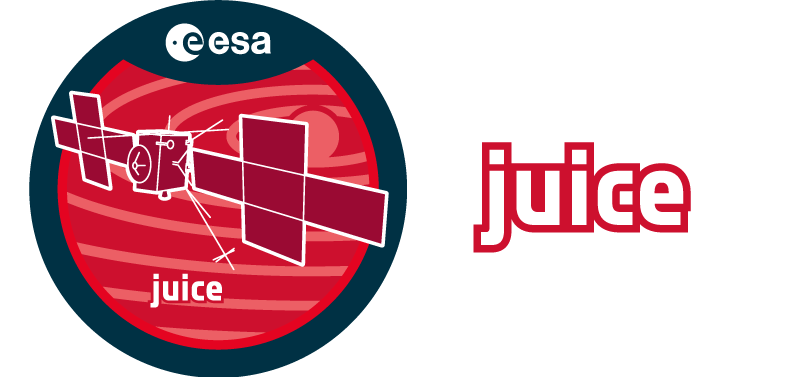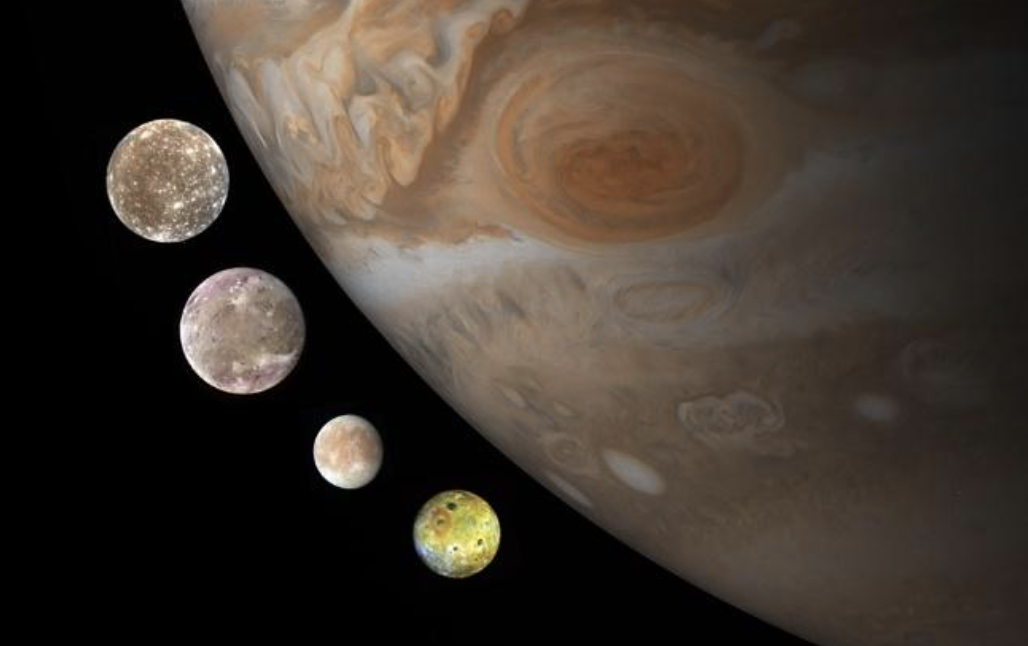
In detail
The system consisting of the planet Jupiter and its main satellites, the so-called ‘Galilean satellites’, is often referred to as a ‘miniature solar system’. Previous space exploration of the Jupiter system by NASA's Voyager and Galileo probes led to the discovery that beneath the visible surface of three of these four moons, the ‘icy’ Galilean satellites Europa, Ganymede and Callisto, lie important oceans of water that have been kept in a liquid state over geological timescales. The combination of this water with biogenic chemical elements, which are essential for the development of elementary forms of life, led to the realisation that it was necessary to return to the Jupiter system to investigate the emergence of ‘habitable’ environments (i.e. capable of supporting elementary forms of life) on some of these moons.
In the context of the ‘Cosmic Vision’ programme, launched by the European Space Agency (ESA) in 2007, the JUICE (JUpiter ICy moons Explorer) mission was selected on 2 May 2012 as the first ‘large’ class mission to be launched on 14 April 2023, with an expected arrival at Jupiter in July 2031. In particular, JUICE is the first fully European-led mission to explore Jupiter and its major moons, and to orbit the largest of these moons, Ganymede.

Giove e le lune Galileiane (da sopra a sotto: Callisto, Ganimede, Europa, Io) Crediti: Kevin M. Gill
Ganymede represents the primary objective of JUICE because it provides a natural laboratory for analysing the nature, evolution and potential habitability of icy worlds in general, but also because it is a planet-sized object that presents unique peculiarities in the entire Solar System explored so far. For Europa, which will be the subject of two close encounters by JUICE, the focus will essentially be on the chemistry of the surface in the geologically youngest places and the identification of potential landing sites for future surface elements (landers) that are currently being studied, as well as the first direct measurement of the subsurface. The study of Jupiter's icy moons will then be complemented by no less than 21 encounters with Callisto, which is less interesting from the point of view of astrobiological potential than Europa and Ganymede but much more indicative of the system's primordial conditions. Finally, the satellite Io will not be flown over by JUICE but will nevertheless be observed and monitored remotely by its instruments.
In addition to the study of moons, the planet Jupiter constitutes an extraordinary laboratory of fluid dynamics, with its complex atmospheric circulation and the peculiar processes of cloud formation and distribution of trace gases such as ammonia, water vapour and phosphine, which are important in constraining the conditions of planet formation and its subsequent evolution. The investigation of the interaction between the upper atmosphere, the moons' surface and the circulation of charged particles in the magnetosphere completes the picture, offering unique insights into the role of these processes in shaping planetary evolution, as well as the study of the faint dust rings surrounding the planet within Io's orbit.
INAF/IAPS has the leadership of 2 of the 11 instruments: the JANUS high-resolution camera and the MAJIS visible-near-infrared imaging spectrometer.


